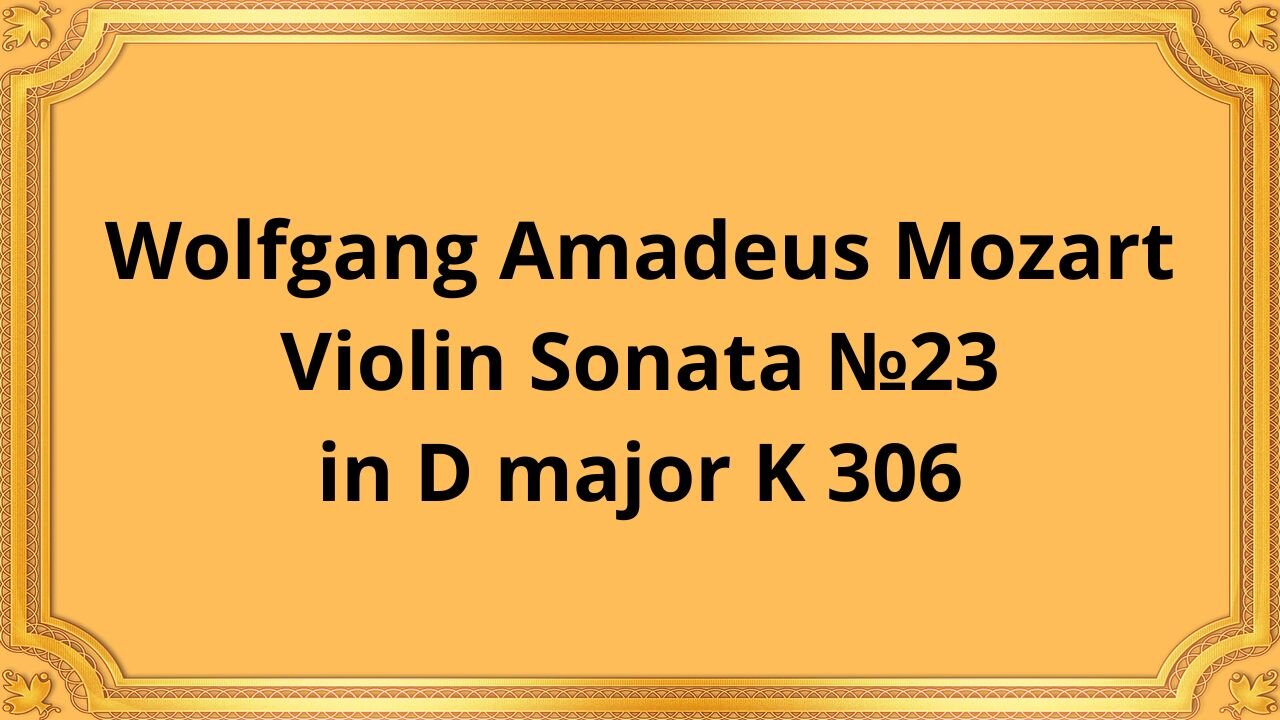Premium Only Content

Wolfgang Amadeus Mozart Violin Sonata №23 in D major K 306
#Mozart#Chamber_music#Classical_music#String_quintet#musical_composition
Publication date 1950
Carlo van Neste (violin)
Naum Sluszny (piano)
Wolfgang Amadeus Mozart's Violin Sonata No. 23 in D major K 306 is a masterpiece of classical music that has captured the hearts of audiences for centuries. It was composed in 1778 during Mozart's visit to Paris and features a delightful interplay between the violin and piano.
The sonata is divided into two movements: the Allegro con spirito and the Andantino cantabile. The first movement is characterized by its lively and joyful melody, which is introduced by the piano and later taken up by the violin. The second movement is more melancholic in nature, with a slower tempo and a more subdued melody.
One of the most notable aspects of the sonata is its technical demands on the performers. Both the violin and piano parts require a high level of technical skill and precision to execute properly. Mozart himself was an accomplished violinist, and he created the sonata to showcase his own virtuosity on the instrument.
Despite its technical demands, the sonata is also highly accessible to audiences. Its catchy melodies and joyful spirit make it a perennial favorite of classical music lovers. It has been performed and recorded by many of the world's top violinists and pianists, including Itzhak Perlman, Pinchas Zukerman, and Martha Argerich.
In terms of its historical significance, the sonata represents a transitional period in Mozart's career. It was composed during his travels throughout Europe, as he sought to establish himself as a professional musician. It also marks a shift away from the more ornate and complex style of music that was popular at the time, towards a more streamlined and accessible form of classical music.
Overall, Wolfgang Amadeus Mozart's Violin Sonata No. 23 in D major K 306 is a true gem of classical music. Its technical demands and joyful melodies make it a favorite of performers and audiences alike, while its historical significance marks it as an important milestone in the evolution of classical music. Whether you're a seasoned classical music aficionado or a newcomer to the genre, this sonata is sure to delight and inspire.
-
 54:56
54:56
Digital Social Hour
1 day ago $0.08 earnedDOGE, Deep State, Drones & Charlie Kirk | Donald Trump Jr.
157 -
 DVR
DVR
The Trish Regan Show
2 hours agoTrump‘s FCC Targets Disney CEO Bob Iger Over ABC News Alleged Misconduct
4.4K4 -
 1:48:19
1:48:19
The Quartering
3 hours agoElon Calls White People Dumb, Vivek Calls American's Lazy & Why Modern Christmas Movies Suck!
64.3K26 -
 2:08:42
2:08:42
The Dilley Show
4 hours ago $21.75 earnedH1B Visa Debate, Culture and More! w/Author Brenden Dilley 12/26/2024
64.3K12 -
 4:55:59
4:55:59
LumpyPotatoX2
6 hours agoThirsty Thursday on BOX Day - #RumbleGaming
47.8K3 -
 1:04:52
1:04:52
Geeks + Gamers
5 hours agoDisney RATIO'D on Christmas Day | Mufasa Embarrassed By Sonic 3
37.3K2 -
 LIVE
LIVE
Sm0k3m
9 hours agoPlaying games on Rumble
195 watching -
 10:37
10:37
Russell Brand
2 days agoHow is this even allowed?
162K833 -
 1:37:26
1:37:26
Real Coffee With Scott Adams
6 hours agoEpisode 2701 CWSA 12/26/24
87.4K81 -
 2:58:58
2:58:58
Wendy Bell Radio
10 hours ago9 Steps Ahead
116K132